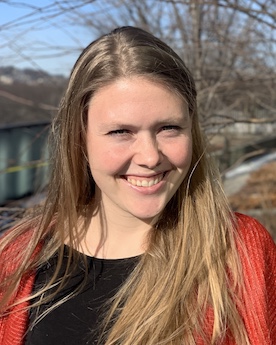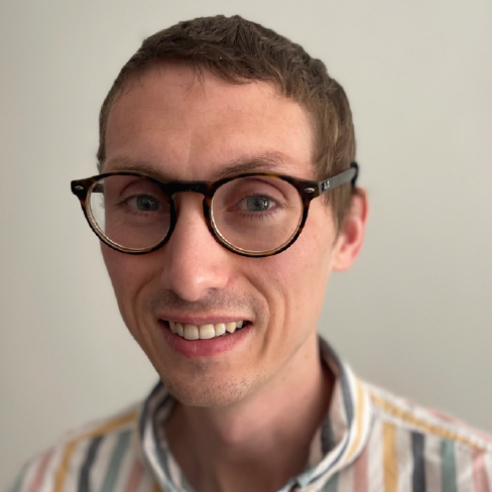

Yale University
Appointed in 1977


Princeton University
Appointed in 1984

University of Frankfurt, Germany
Appointed in 1968
Read more
University of Frankfurt, Germany
Appointed in 1968


Harvard University
Appointed in 1997


Harvard University
Appointed in 2011

Imperial Cancer Research Fund Laboratories, England
Appointed in 1974
Read more
Imperial Cancer Research Fund Laboratories, England
Appointed in 1974


Stanford University
Appointed in 1981


Yale University
Appointed in 1976

University of California, San Francisco
Appointed in 2015
Read more
University of California, San Francisco
Appointed in 2015
Polytopic membrane proteins undergo a complicated folding process, whereby they must be co-translationally targeted to the endoplasmic reticulum (ER) for maturation and export to cellular membranes. While our understanding of the chaperones involved in soluble protein folding has rapidly expanded, there is little known about the chaperones dedicated to folding and quality control of membrane proteins. Recently, a conserved ER membrane protein complex (EMC) was discovered from a genetic screen in yeast aimed at identifying genes that disrupt the ER protein folding environment. Genetic interaction patterns arising from deletion of the EMC and preliminary biochemical data suggest the EMC may function as a chaperone for polytopic membrane proteins. As a postdoctoral fellow in the Frost and Weissman laboratories at UCSF, I plan to use a combination of approaches ranging from cryo-electron microscopy to genetics and cell biology to elucidate how the EMC affects membrane protein topology in yeast and human cells.

University of California, Berkeley
Appointed in 2008
Read more
University of California, Berkeley
Appointed in 2008

Walter and Eliza Hall Institute of Medical Research, Australia
Appointed in 1971
Read more
Walter and Eliza Hall Institute of Medical Research, Australia
Appointed in 1971

Whitehead Institute for Biomedical Research
Appointed in 2020
Read more
Whitehead Institute for Biomedical Research
Appointed in 2020
Animals rely on effective coordination of cell behavior in all phases of their development and lifespan. Cells communicate to coordinate their activity using several physical or chemical communication strategies, which are often interdependent. One communication strategy central in development and in adult animals relies on secreted signaling proteins that bind membrane-tethered receptors in diverse target tissues to affect cell identity or behavior. Whereas we understand in great detail how signals are synthesized, secreted, received and processed, we understand comparatively very little about how signals travel from their origin to their destination. I use molecular genetic and synthetic biology tools in cultured mammalian cells to reconstitute cell signaling events, and I use these reconstituted signaling pathways to understand how secreted protein signals navigate the extracellular environment in developing or adult tissues.

California Institute of Technology
Appointed in 1971
Read more
California Institute of Technology
Appointed in 1971


Princeton University
Appointed in 1997

University of Wisconsin /
Rockefeller Institute
Appointed in 1945
Read more
University of Wisconsin / Rockefeller Institute
Appointed in 1945

Carnegie Institute for Science
Appointed in 1991
Read more
Carnegie Institute for Science
Appointed in 1991

University of California, Irvine
Appointed in 2003
Read more
University of California, Irvine
Appointed in 2003

Whitehead Institute for Biomedical Research
Appointed in 2023
Read more
Whitehead Institute for Biomedical Research
Appointed in 2023
Tumor-associated macrophages (TAMs) are the most abundant innate immune cell type in tumors. TAMs can either inhibit or support tumor progression, though it is unclear how their dichotomous functions are regulated. Dr. Alexandra Schnell predicts that the functional heterogeneity of TAMs may be due to distinct lineage origins and cell plasticity. To investigate these hypotheses, Dr. Schnell is developing a myeloid-specific lineage tracing tool to track TAM heterogeneity in tumors, and in response to immunotherapies. Schnell will conduct these experiments in Dr. Jonathan Weissman’s and Dr. Kipp Weiskopf’s labs at the Whitehead Institute. By better understanding TAM heterogeneity, Schnell hopes to enable the development of TAM-targeted cancer immunotherapies that specifically target tumor-promoting macrophages.
During her PhD, Schnell studied the fundamental mechanisms of the immune system in Dr. Vijay Kuchroo’s lab at Harvard Medical School. There, Dr. Schnell performed lineage tracing of immune cells during autoimmune inflammation. Her studies provided a mechanism for how homeostatic intestinal immune cells act as a reservoir for pathogenic inflammation elsewhere in the body. With this background in immunity and lineage tracing, Dr. Schnell will now investigate how the heterogeneity of tumor immune cells can be leveraged to generate new cancer immunotherapies.


Rockefeller University
Appointed in 2004


Rockefeller University
Appointed in 1992


Harvard University
Appointed in 2005

Fred Hutchinson Cancer Center
Appointed in 2016
Read more
Fred Hutchinson Cancer Center
Appointed in 2016
I am interested in how evolution has shaped the eukaryotic actin cytoskeleton. The actin cytoskeleton is a critical force-generating polymer that powers fundamental cellular processes, including cell motility, vesicle transport and cytokinesis. Despite actins being among the most highly conserved proteins in eukaryotes, a number of actin variants and their regulators show strong signatures of genetic innovation in Drosophilids. Birth and death of novel actins have occurred between lineages and a few actin genes appear to rapidly evolve, suggestive of positive selection. Using genetic, evolutionary and cell biological analyses, I am investigating the evolutionary causes and functional consequences of genetic changes among components of the actin cytoskeleton with Drosophila melanogaster as the model organism. Exploring the actin cytoskeleton and its regulation from an evolutionary vantage will provide insight into the selective pressure on actins and how it is harnessed in many cellular processes.


Yale University
Appointed in 1976

Frederick Cancer Research Facility
Appointed in 1982
Read more
Frederick Cancer Research Facility
Appointed in 1982


Columbia University
Appointed in 1948

University of Oxford, England
Appointed in 1968
Read more
University of Oxford, England
Appointed in 1968


Columbia University
Appointed in 2009
I am developing methods to control gene expression and recombination with light.  This will allow greater spatial and temporal control than can be achieved with current genetic and chemical methods.
I majored in chemistry and biology at the University of Virginia, where I worked in the lab of Michael Timko. I discovered that, even though I was studying an algae that most people have never heard of, it was still really cool to be the first in the world to know something.  Also, during my first year, the UVA football team was briefly ranked in the top ten, an accomplishment which I can only assume was thanks to my presence.  In graduate school at Rockefeller University, I did my research in the laboratory of Tom Muir, playing with molecular legos for five and a half years and getting a PhD out of that experience as a bonus.  Currently I’m in Richard Axel’s lab at Columbia, where I feel a little out of place among the real biologists.  All my time outside of work is now taken up chasing around a two-year-old.

Weizmann Institute of Science, Israel
Appointed in 1986
Read more
Weizmann Institute of Science, Israel
Appointed in 1986


Harvard University
Appointed in 2006

Whitehead Institute for Biomedical Research
Appointed in 2006
Read more
Whitehead Institute for Biomedical Research
Appointed in 2006


Yale University
Appointed in 1962


University of Oxford, England
Appointed in 1969

University of California, San Francisco
Appointed in 1971
Read more
University of California, San Francisco
Appointed in 1971


Harvard University
Appointed in 2024
Social interactions between distinct species are important at ecological scales yet are mediated at the molecular level by the transfer of biomolecules such as small chemicals and proteins between organisms. Symbiosis is an example of a relationship among species where both species benefit from a social behavior or interaction.
Dr. Trey Scott will examine the symbiotic relationship between butterfly larvae in the Lycaenidae family and ants in Dr. Naomi Pierce’s lab at Harvard University. Lycaenid caterpillars secrete nutritious and psychoactive substances that are ingested by ants. Ants, in return, protect their renewable food source, the caterpillar, during its vulnerable developmental stage. Dr. Scott will determine the molecular, cellular, and evolutionary bases for this example of symbiosis. Scott’s research will provide novel insight into social interactions, broadly speaking, including their evolution.
Scott examined social interactions as a graduate student in Dr. Joan Strassmann’s and Dr. David Queller’s labs at Washington University. Although the above example of symbiosis between ants and Lycaenid butterflies is relatively straightforward, most examples of social interactions contain context-dependent elements of both cooperation and conflict. Using Dictyostelium discoideum amoebae and Paraburkholderia bacteria as a model for social interactions, Scott discovered that the bacteria may benefit or be harmed by the amoebae depending on current environmental conditions – in this case, rainfall. Scott proposed that this flexibility helps the amoebae host survive in harsh soils with variable prey. Furthermore, Scott showed how long-term social interactions influence evolutionary adaptation. With this extensive background in social interactions, Scott is poised to make breakthroughs investigating the evolution of symbiosis between butterflies and ants during his postdoctoral research.


University of Cincinnati
Appointed in 1990

Institut de Chimie Biologique, France
Appointed in 1973
Read more
Institut de Chimie Biologique, France
Appointed in 1973


Stanford University
Appointed in 1970

University of California, Berkeley
Appointed in 1989
Read more
University of California, Berkeley
Appointed in 1989


Stanford University
Appointed in 1974


University of Oregon
Appointed in 1993

Harvard University Medical School
Appointed in 2016
Read more
Harvard University Medical School
Appointed in 2016


Harvard University
Appointed in 2021
The periaqueductal grey (PAG) plays a critical role in the generation of complex social and defensive behaviors. However, the mechanisms by which transcriptionally distinct cell types and their neural dynamics within the PAG are organized to produce these behaviors are poorly understood. In this study, we used miniaturized 2-photon microscopy to record the neural activity of the PAG in behaving mice as they engaged in social and defensive behaviors. We aim to combine this information with imaging-based spatial transcriptomics, to better understand how the gene expression patterns of different neurons contribute to the functional organization of the PAG, and the regulation of social and defensive behaviors.

University of California, Berkeley
Appointed in 1996
Read more
University of California, Berkeley
Appointed in 1996

Carnegie Institute for Science
Appointed in 1981
Read more
Carnegie Institute for Science
Appointed in 1981

Rockefeller University
Appointed in 1994
Read more
Rockefeller University
Appointed in 1994


Columbia University
Appointed in 1997


Harvard University
Appointed in 1995

Albert Einstein College of Medicine
Appointed in 1966
Read more
Albert Einstein College of Medicine
Appointed in 1966

Institut Pasteur, France /
Harvard University
Appointed in 1967
Read more
Institut Pasteur, France / Harvard University
Appointed in 1967

Harvard University /
Broad Institute
Appointed in 2011
Read more
Harvard University / Broad Institute
Appointed in 2011

Massachusetts Institute of Technology
Appointed in 2012
Read more
Massachusetts Institute of Technology
Appointed in 2012